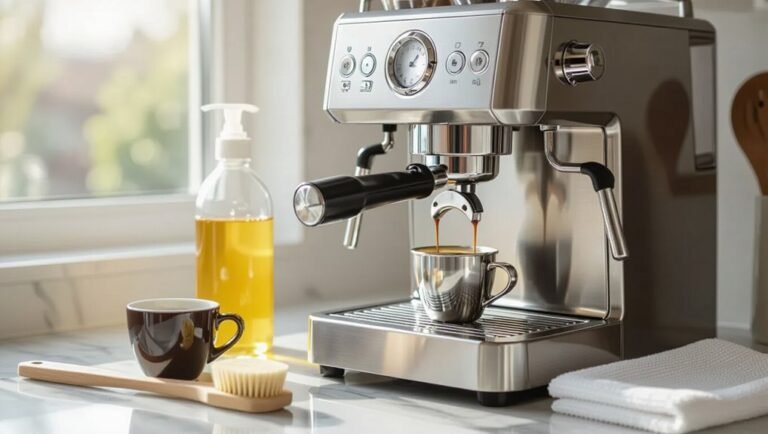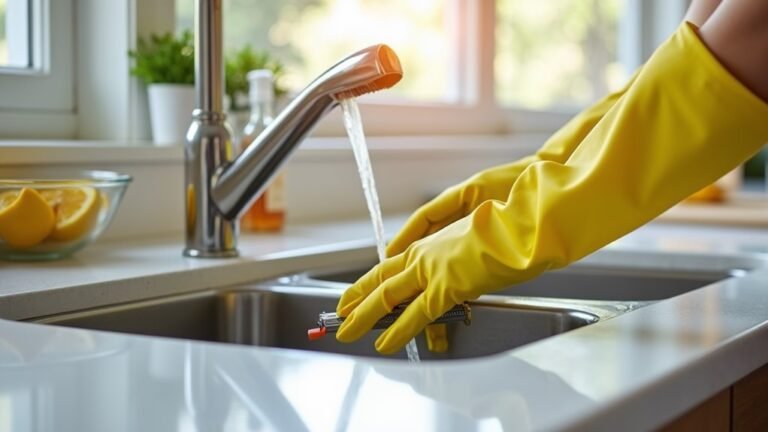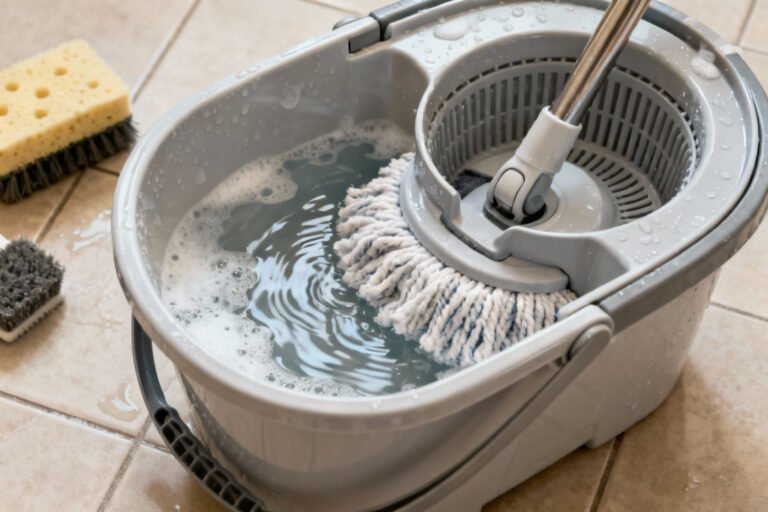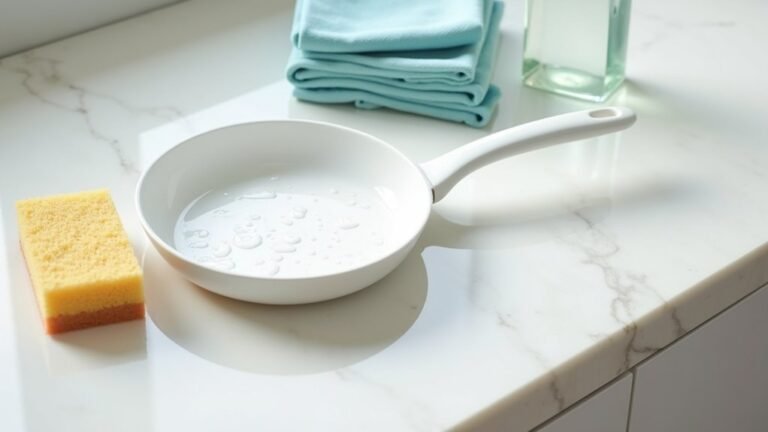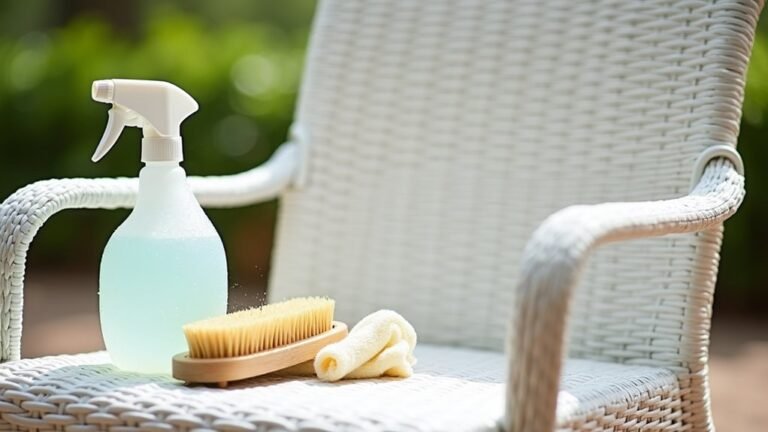Tankless water heaters need regular cleaning to work their best, just like cars need tune-ups. If you've noticed your hot water isn't as warm as it should be, or the water pressure feels low, don't rush to call a plumber just yet. A good cleaning might fix these problems and keep money in your pocket.
Some of the links in this article may be affiliate links. If you make a purchase through these links, we may earn a small commission at no extra cost to you. Thank you.
According to Matt Risinger, a licensed builder and home improvement expert, "Cleaning your tankless water heater once a year can extend its life by several years and maintain its efficiency, especially in areas with hard water."
The cleaning process is simpler than you might think, and doing it yourself can save you money on repair bills. Many homeowners avoid this task because they think it's too hard, but with the right steps, anyone can do it.
Long-Term Heater Maintenance Basics
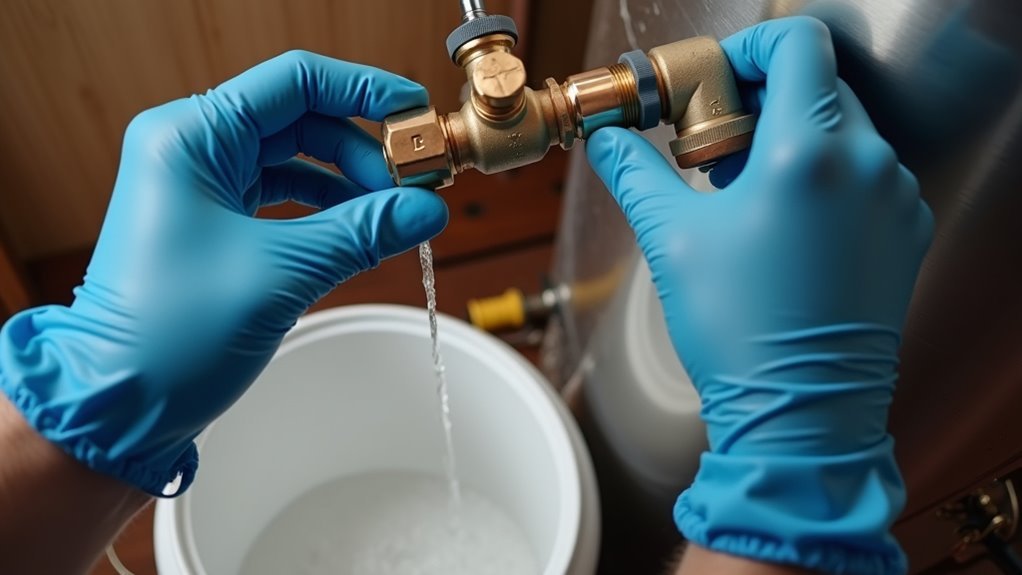
When it comes to maintaining your tankless water heater, regular care is essential for keeping it running efficiently.
We'll need to descale our units at least once or twice yearly, especially in areas with hard water.
Using white vinegar is an effective way to remove mineral buildup from the heat exchanger.
For best results, we recommend installing a sediment trap and monitoring local water hardness levels.
##
Let's look at what you'll need to do (and avoid) when cleaning your tankless water heater to keep it running efficiently.
We'll walk through the essential steps of the cleaning process, from proper preparation to the final rinse cycle, to guarantee you're maintaining your unit correctly.
Whether you're a first-time cleaner or a seasoned pro, these guidelines will help protect your investment and maintain peak performance.
Things to Do When Cleaning a Tankless Water Heater
Regular maintenance of your tankless water heater is essential for peak performance and longevity.
A thorough cleaning process removes mineral deposits and scale buildup that can reduce efficiency and potentially damage the unit over time. Following a systematic approach guarantees the cleaning is done safely and effectively, protecting both the equipment and the person performing the maintenance.
- Power Off – Disconnect electrical supply completely to prevent any safety hazards during cleaning
- Valve Control – Close both inlet and outlet water valves to isolate the unit
- Drainage – Allow unit to drain fully before starting the cleaning process
- Pump Setup – Connect submersible pump and hoses correctly for solution circulation
- Vinegar Solution – Use white vinegar as a natural descaling agent for the first cleaning cycle
- Circulation Time – Run the cleaning solution for minimum 45 minutes
- Second Cycle – Perform additional cleaning cycle if first solution appears dark
- Water Flush – Run clean water through system for 30 seconds to remove vinegar residue
- Equipment Care – Clean pump and hoses thoroughly after use
- Schedule Maintenance – Set reminder for next cleaning in six months
Things to Avoid When Cleaning a Tankless Water Heater
When cleaning a tankless water heater, it's vital to follow proper maintenance procedures to prevent damage and guarantee peak performance. Incorrect cleaning methods or harsh chemicals can lead to costly repairs, reduced efficiency, and potentially dangerous situations, making it essential to understand what practices to avoid during the maintenance process.
- Using aggressive chemical descalers – These harsh chemicals can corrode copper tubing and internal components, leading to permanent damage and system failure.
- Operating without shutting off power and gas – Failing to disconnect power sources creates serious safety hazards during maintenance.
- Applying excessive water pressure – High-pressure cleaning methods can damage delicate internal parts and create leaks within the system.
- Using loose or improper connections – Unsecured hoses and fittings can cause spills, reduce cleaning effectiveness, and create potential water damage.
- Leaving the pump unattended – Extended pump operation without monitoring vinegar color can miss signs of excessive mineral buildup requiring additional cleaning.
- Skipping manufacturer guidelines – Ignoring specific maintenance instructions for your model can lead to improper cleaning and potential warranty issues.
- Mixing cleaning solutions – Combining different cleaning agents can create harmful chemical reactions and damage the unit's internal components.
Steps
Cleaning a tankless water heater is essential for maintaining its efficiency and prolonging its lifespan.
Regular maintenance prevents mineral buildup, which can reduce water flow and damage internal components. A thorough cleaning every six months using white vinegar effectively removes calcium deposits and other mineral accumulations that naturally occur during normal operation.
Step 1: Turn off and unplug the water heater unit
Step 2: Close both water inlet and outlet valves
Step 3: Drain remaining water into a bowl or basin
Step 4: Connect portable transfer pump to cold and hot service ports
Step 5: Fill bucket with two gallons of white vinegar
Step 6: Submerge pump hoses in vinegar solution
Step 7: Run vinegar circulation for 45 minutes
Step 8: Dispose of used vinegar and repeat with fresh solution
Step 9: Continue cycles until vinegar remains clear
Step 10: Flush system with clean water for 30 seconds
Step 11: Close service valves
Step 12: Schedule next cleaning for six months later
Final Thoughts
Maintaining your tankless water heater through proper cleaning and maintenance isn't just about following a checklist – it's about protecting your investment and ensuring reliable hot water for years to come.
##
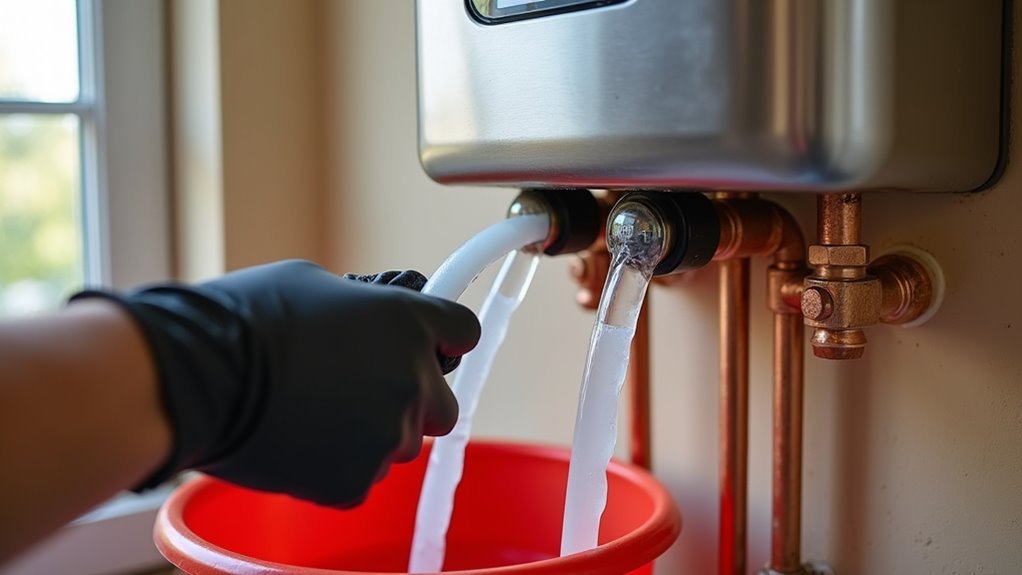
Maintaining your tankless water heater through regular cleaning is a simple yet vital task that can save you money and extend your unit's lifespan. While the descaling process may seem intimidating at first, it becomes routine with practice and the right tools.
By committing to cleaning your unit once or twice yearly, you'll guarantee peak performance, prevent costly repairs, and continue enjoying efficient hot water delivery throughout your home.
Don't wait until you notice decreased performance or strange noises from your tankless water heater. Set a regular maintenance schedule, keep your cleaning supplies organized, and treat this task as an essential part of home maintenance.
The time and effort invested in proper cleaning will pay off through years of reliable service from your tankless water heater.
Take action today by marking your calendar for regular maintenance intervals and gathering the necessary supplies for your first or next cleaning session. Your tankless water heater—and your utility bills—will thank you.

